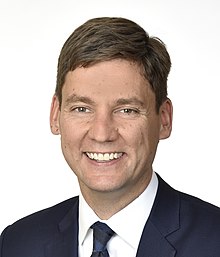Election Spending Rules in BC
“Don’t mind the elephant in the room, we’re redecorating.”
When the B.C. government tabled its legislation to amend the Election Act in March, it was probably hoping no one would notice. They were in for a bit of a shock.
While much of the focus has been on the provision which would give political parties the names of each and every British Columbian who casts a ballot, the government is also proposing to do away with the pre-campaign period and the spending limits that apply to political parties within it.
The pre-campaign period – unique to B.C. – is the 60-days that falls before the 28-day campaign. The B.C. Court of Appeal has struck down the government’s attempts to limit third-party spending in that 60-day period three times. Evidently, the government got the hint.
The bigger issue isn’t what candidates and parties can spend before the campaign, it’s what they can spend during it. B.C.’s limits are so high they’re pretty well meaningless.
And the government isn’t proposing to do anything about that.
In the 2013 B.C. election a candidate was allowed to spend $73,218 over the pre-campaign period and another $73,218 during the campaign for a total of $146,436. On average, each B.C. riding had 37,370 voters.
In the 2011 federal election, the average spending limit was $88,097 per riding. Average number of voters, 78,758.
Federal limits are adjusted to the number of voters in each riding, with allowances for larger or remote ridings.
Not so in B.C. A candidate running in Stitkine, the riding with the fewest voters (13,845), and a candidate running in Surrey-Cloverdale, the riding with the most (52,817), had exactly the same limit, $146,436.
And both candidates could have spent $12,000 more than a candidate running in Oak Ridges-Markham, Canada’s largest riding with 153,972 voters.
There’s a top up for political parties too. And B.C. isn’t a slouch in that department either.
In 2013, the pre-campaign spending limit for a party was $1.15 million plus $4.6 million for the campaign itself.
Most jurisdictions tie a party’s limit to the number of voters in the ridings where a party is running a candidate. In the 2011 federal election, limits ranged from $62,702 to $21 million.
Not so in B.C. A registered party that ran two candidates could have spent the full $5.715 million that a party running a full slate of 85 candidates was entitled to spend.
Since the limits are so absurdly high, neither the Liberals at $11.7 million nor the NDP at $9.4 million came anywhere close to hitting the overall cap of $18.2 million in 2013.
But they both spent at least $1.1 million more than any political party and all 125 of its candidates did in last year’s Quebec election. Quebec has six million voters, nearly double the number in B.C.
The spending limit in the Quebec election was $1.37 per voter (party and candidate all in). In the Ontario election, it was $2.08 per voter. Both provinces adjust limits for northern or remote ridings and the number of candidates a party runs.
If B.C.’s spending limits are out of whack imagine the impact on the other side of the ledger for parties that want to take full advantage of them.
Last year, the B.C. Liberal party raked in $10.4 million, that’s nearly $1 million more than the federal NDP raised across Canada and half of what the Conservative Party of Canada brought in.
If the pre-campaign period is done away with, the existing spending limit for the campaign itself will still be in place and it won’t be too onerous for a political party to make do on $4.6 million or candidates on $73,218.
Add it all up and a party running a full slate of 87 candidates (two more seats for 2017) will have a limit of roughly $11 million or $3.43 per voter.
That’s $2.7 million more than the Quebec Liberals and their 125 candidates spent in the 2014 Quebec election. And the Quebec Liberals – like their B.C. cousins – were tops in spending.
So what would the limit be in B.C. if the government adopted the Ontario limit? It would drop from $11 million to $6.65 million. Adopt Quebec’s and it drops to $4.4 million.
Would that be such a bad thing?


























